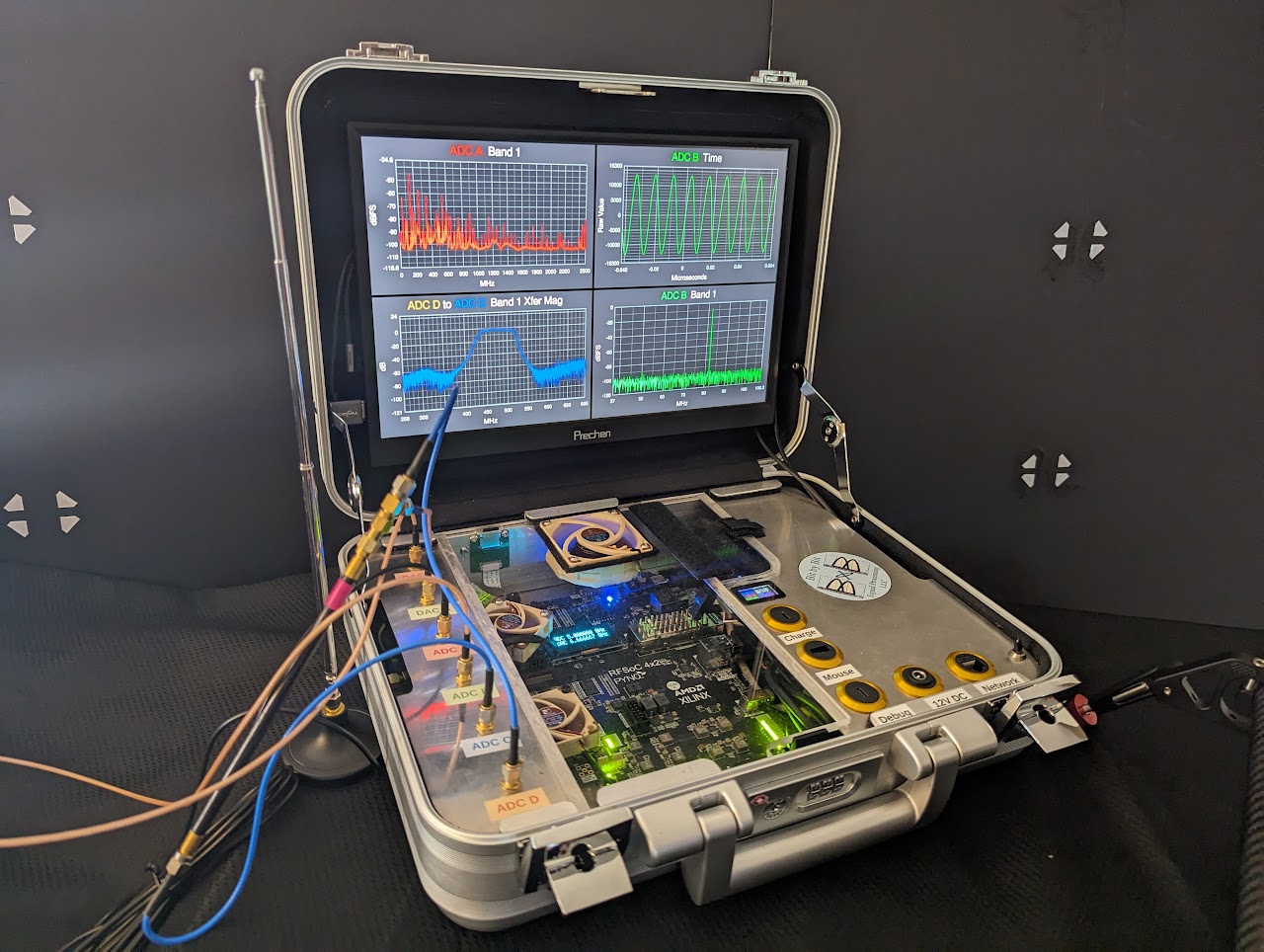The BxBApp is a demonstration of the capabilites of the BxBFFT. It demonstrates large non-power-of-2 BxBFFT Fast Fourier Transforms operating at high levels of parallelism and high clock rates. It shows high signal fidelity. It also serves other roles, such as a development platform for signal processing applications, a test system to characterize the ADC and DAC or analog components, and as a useful piece of test equipment.
The BxBApp user interface is a competitor to other Xilinx-sponsored development environments, such as Petalinux and PYNQ. It doesn't have the backing or the following, but in many ways it is the most polished of the three environments.
Below are pictures and videos of the BxBApp demo running on two different FPGA systems. Following those are a more detailed description of the app. Following that are download links for the free versions of the app.

The BxBApp is a standalone demo that is available on this page for either the RealDigital RFSoC4x2 board or for the Xilinx ZCU111 board.
The app functions as an oscilloscope, spectrum analyzer, and network analyzer. It can also produce simple test waveforms. Another use of it is to characterize the ADCs and DACs on the FPGA board, as the demo's processing has higher accuracy than the accuracy of the ADCs and DACs.
The app runs entirely on the board, with no attached PC necessary. It can work with an attached touchscreen monitor, or with a monitor and mouse, or by connecting the board to a network and connecting to it with a web browser.
The app shows off Bit by Bit Signal Processing's BxBFFT and also its upcoming Polyphase Filter Bank (PFB) channelizer product. The app processes ADC data in real time at 2X oversampling with greater than 100dB dynamic range.
The version for the RealDigital RFSoC4x2 FPGA board uses a BxBFFT with 96000 real input points and 48000 complex output points, processing 12 real samples per clock, meeting timing at up to 550MHz FPGA clock rates. This translates to a 6.6Gsps ADC, above the 5Gsps spec. The implementation supports variable sampling rates, from 500MHz up to beyond 5GHz. On the RFSoC4x2 app, transfer functions can be taken, but only from one ADC input to another.
The version for the Xilinx ZCU111 FPGA board uses a 98304-real-point to 49152-complex-point BxBFFT operating at 8 complex samples per clock. This version doesn't support variable sampling rates, but does support transfer functions from DAC outputs to ADC inputs, as well as ADC to ADC.
The BxBApp turns these boards into useful lab instruments. You can characterize the ADCs and DACs, measure and match cable and filter delays, measure filter magnitude and phase characteristics, generate sine and random noise signals, and observe signals in time or frequency.
This app can be ported to other boards. Ports exist to the ZCU208, HTG-ZRF8, and HTG-ZRF-HH boards, but they are not currently freely available. Contact us if there is a business case for making a port.